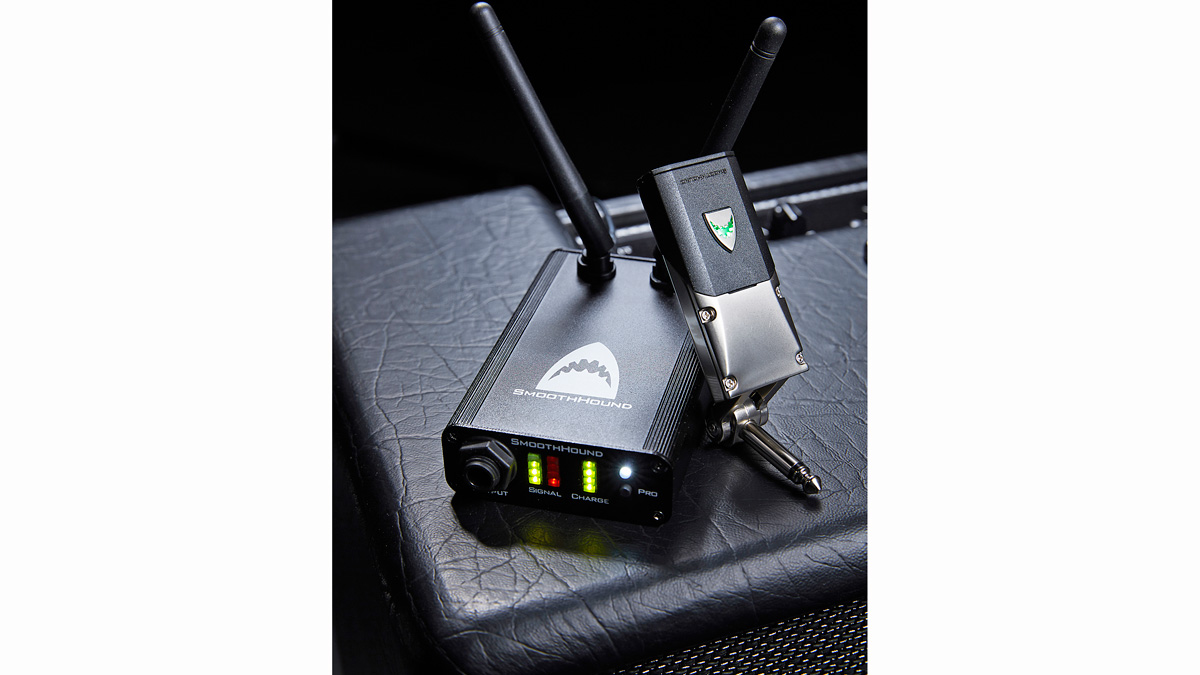MusicRadar Verdict
Small size, competitive price and a really good sound make this home-grown product well worth checking out.
Pros
- +
Good value. Nice and compact.
Cons
- -
Take care not to stomp on the antennas.
MusicRadar's got your back
Eliminating cable runs from your guitar can result in a lot less clutter and freedom of movement on stage.
If you fancy some of that, a new Cambridgeshire-based company Smooth Hound Innovations has recently introduced its Classic wireless guitar system, described as a completely original design from the ground up and designed for really high-fidelity sound.
In Use
The Classic is a light and easily portable system. The transmitter is powered from a nine-volt supply and is very compact compared to most competition.
Sporting LEDs that indicate signal and charge levels, it will sit unobtrusively on your amp or pedalboard, although you'll need to be mindful not to stamp on the two small antennae in the latter setup.
Where most wireless transmitters are designed to be fixed to your guitar strap or belt, the one here, not much bigger than a PP3 battery, has an integral jack plug (with over 270 degrees rotation) and will happily plug into the output socket of most guitars, even Strats. Our only concern really is a flimsy battery cover.
With a decent range for stage use, the Classic gives us a solid signal at all times - it automatically changes channels to avoid interference, transmitting on four channels while testing four more for backup. Sound- wise, there are no tonal deficiencies, and we like the nice clear top end, which, if desired, can be toned down by switchable simulation of 10-, 20- and 30-foot cables.
Want all the hottest music and gear news, reviews, deals, features and more, direct to your inbox? Sign up here.
Trevor Curwen has played guitar for several decades – he's also mimed it on the UK's Top of the Pops. Much of his working life, though, has been spent behind the mixing desk, during which time he has built up a solid collection of the guitars, amps and pedals needed to cover just about any studio session. He writes pedal reviews for Guitarist and has contributed to Total Guitar, MusicRadar and Future Music among others.

